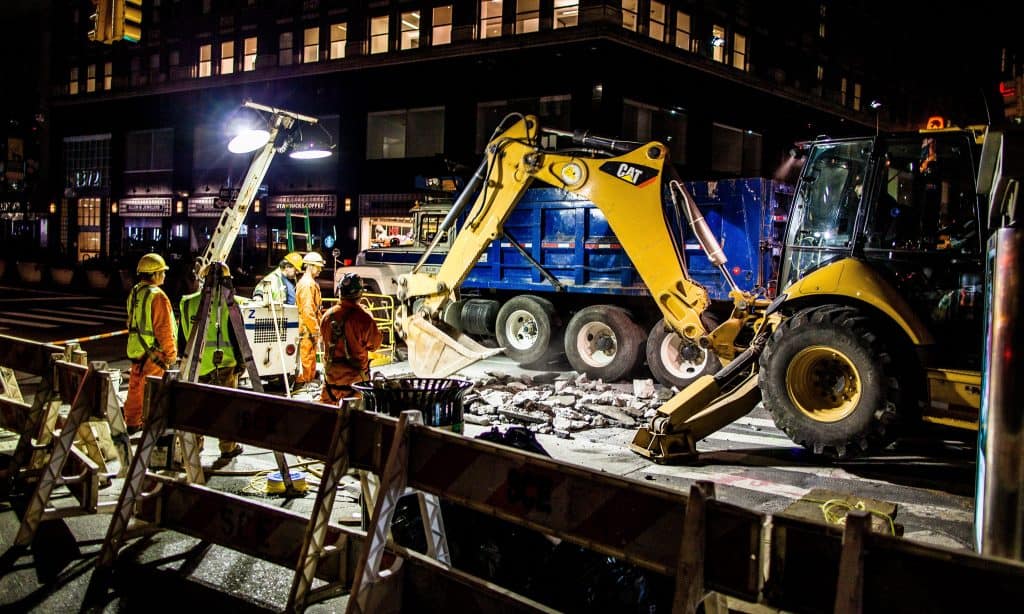By Brian Meehan and Edward Timmons — April 19, 2018
This article was originally published in The Hill. Photo by Sunghwan Yoon, cropped, CC BY-SA 2.0.
Income inequality has become a prominent issue and a major political talking point. How should U.S. policymakers address income inequality concerns? Suggestions from experts and political pundits include increasing investment in higher education and wealth redistribution. Some have even gone so far as to suggest that the government provide more subsidies for higher education so that it becomes “free.”
In order to better understand wealth and income inequality, however, we need to examine how occupational opportunities for low-wage and entry-level workers impact income mobility. Expanded opportunities for low income workers could help them climb the income ladder, and by doing so realize the American Dream. A reduction in occupational opportunities might make that dream harder to realize. A new study that we co-authored examines the impact of a changing structure of low- to moderate-income occupational licensing and investigates the relationship between this changing structure and subsequent changes in absolute upward mobility and inequality.
Our study (co-authored with Andrew Meehan of Central Michigan University and John Hazenstab of Saint Francis University) examines the growth of licensing among 102 low- to moderate-income occupations referenced by the Institute for Justice. Licensing requirements for these occupations vary dramatically from state to state. For some occupations, licensing is relatively rare.
Forest workers, for example, are only licensed in Connecticut and florists are only licensed in Louisiana. Some occupations are a bit more commonly licensed. Football fans may not be surprised to learn that packers are licensed in Wisconsin and in five additional states. Other occupations are universally licensed. Barbers for instance, are licensed in every state. The requirements for these licenses also vary from state to state. The requirements consist of fees, educational classes, training, and having to pass an exam. Fees for some licenses can add up to hundreds or thousands of dollars, but some of the most onerous requirements can come in the form of education and training requirements that take years to complete.
There are supporters of expanding occupational licensing. Politicians and licensed industry members often defend licensing practices in the name of consumer safety. There is very little evidence that occupational licensing improves the quality of service delivered to consumers. In addition, licensing restrictions make it more difficult for people to enter the workforce and thus reduce competition for individuals and firms that are currently licensed. Our study quantifies the growth of the number of low- and moderate-income occupations requiring licenses from 1993 to 2012. During this time period, Louisiana added 59 licenses for these occupations, the most of any state. Over the same period, Oklahoma and Kentucky added only 15 occupational licenses for these occupations. On average, states added 31 additional occupational licenses for low- to moderate-income occupations.
What does an increase in the number of licensed occupations mean for average Americans? We find evidence that licensing growth is correlated with reductions in absolute upward mobility. Absolute upward mobility measures the chances that individuals can climb the economic ladder and earn more relative to their parents. More specifically, growth in the number of licensed occupations is associated with a 1.7 percent reduction in absolute mobility for states that had the lowest levels of licensing growth and a 6.7 percent reduction in absolute mobility for states that had the most growth in licensing. In other words, it is becoming more difficult to climb the income ladder as licensing spreads to more occupations and affects more Americans.
We also find evidence that growth in occupational licensing has had a measurable impact on income inequality. Utilizing a commonly used measure of income inequality called the Gini coefficient, we find evidence of a negative correlation between licensing growth and county-level income inequality. More specifically, licensing growth is associated with increases in income inequality ranging from 3.9 to 15.4 percent.
As policy makers consider ways to address income inequality and decreases in economic mobility, the costs of occupational licensing must be considered. Taking a hard look at growth in occupational licensing and unnecessary licensing requirements and fees may result in increased entry into many different professions. Breaking down these barriers to prosperity may go a long way in promoting equality and mobility.


